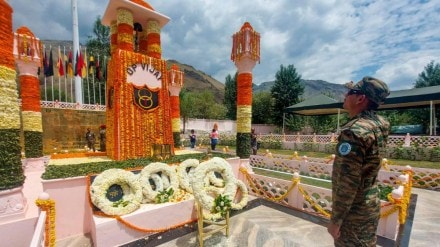Kargil was the fourth war wherein Pakistan fought India despite Indian desire to maintain peace, tranquillity and good neighbourly relations. This intent was demonstrated by India multiple times in the history including in the run up to Kargil conflict wherein then Prime Minister AB Vajpayee travelled to Lahore in Feb 1999 to cement the friendly relations with Pakistan. As against leveraging this effort of India for the good of its people, Pakistan decided to backstab India in the form of occupying un-held territories on the Indian side of Line of Control (LOC). This resulted in Kargil war and Pakistan was shown its place not only by the Indian Defence Forces but the entire world as well. The military victory of Indian defence forces and political maturity of the country gained the respect of the entire world.
Lessons Learnt
As we celebrate the 25th year of Kargil, multiple positive and some negative aspects are being highlighted by various stakeholders based on their knowledge, experience and perception. While all these views have their merits/demerits as they are analysed, what is most important at this juncture is to analyse as to what kind of future soldiers are needed to give the country an ‘assured win’.
Terrain of Kargil
The terrain of Kargil conflict was mix of glaciated, high altitude and rugged terrain requiring cliff assaults to clear the heights from the intruders at that time and similar requirements exist for future even if we have to take offensive actions against our Western adversary which has bulk of J&K terrain with this kind of profile but the situation on Line of Actual Control (LAC) with our Northern border is also similar to include glaciated, rugged and high-altitude terrain.
It is a medically proven fact beyond dispute that fighting in such a type of harsh terrain requires the highest degree of physical fitness. It is also a scientifically proven medical fact that physical fitness reduces with advancing age irrespective of individual physical fitness. This aspect has been accepted by the Indian defence forces in totality which has resulted in PPT and BPET test timings and related performances being accepted lower with the advancing age.
Younger Profile
It became abundantly clear that the younger age profile of the defence forces is needed to address this challenge to fight effectively in such terrains. As against the need of maintaining a younger age profile then at the time of Kargil conflict and now to handle the China challenge, Indian Army has one of the highest average age profiles amongst the leading Armies of the World. It needed to be reduced to ensure that Indian Defence Forces remain a ‘winning team’ for times to come.
Agnipath Scheme
Launch of Agnipath scheme in Jun 22 was one such transformative scheme which focused on enhancing the ‘operational preparedness’ of the forces by maintaining the younger age profile critically needed to fight and sustain in high altitude areas. Before the full benefit of the scheme got validated i.e. vetting the profile of 25 percent retained soldiers, the political slugfest started attempting to deny the defence forces their rightful professionals capable of fighting even in the harshest and most difficult terrains. The country does not require adversaries like China and Pakistan when the non connected stakeholders are involved in negative criticism of a scheme which has been primarily evolved with the purpose of enhancing its operational preparedness.
Any scheme may have certain aspects needing refinement and the same may be needed for Agnipath as well. Entire military hierarchy is continuously monitoring the scheme and it is natural that changes, if any, will be undertaken at appropriate time. One must realise that if there is a war today, the same has to be fought by those ‘in service’ and therefore there is a need to support their effort to execute this transformative change in a seamless manner. We can ensure an ‘assured win’ over adversaries in such high-altitude terrains only if we are able to reduce the average age profile of our units, a fact proven and accepted by the defence forces from inception but implemented in true sense through this transformative scheme.
